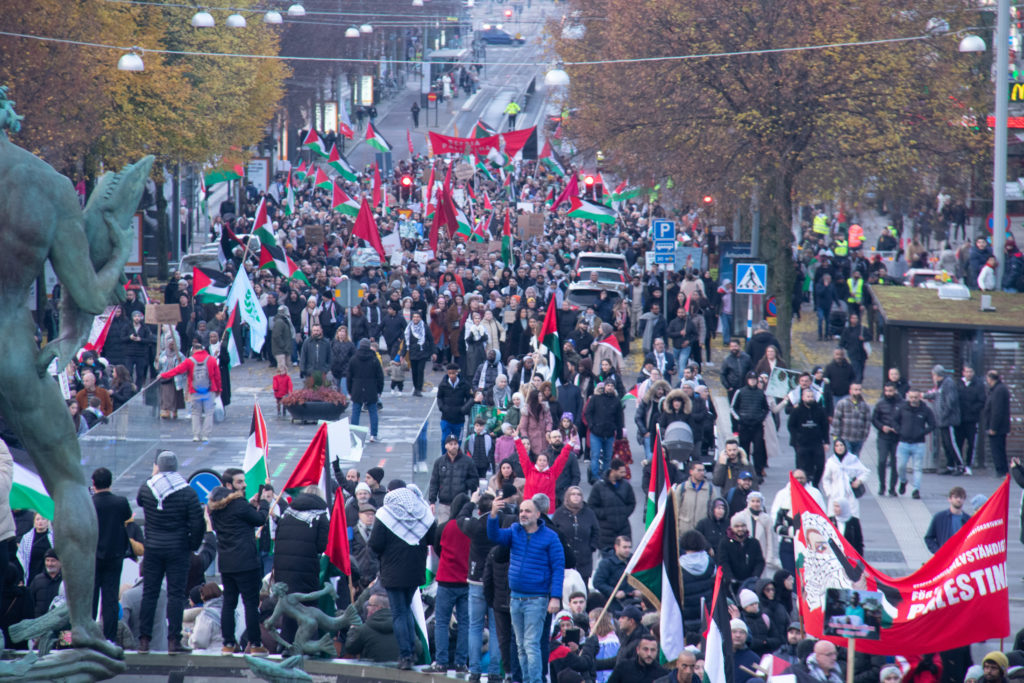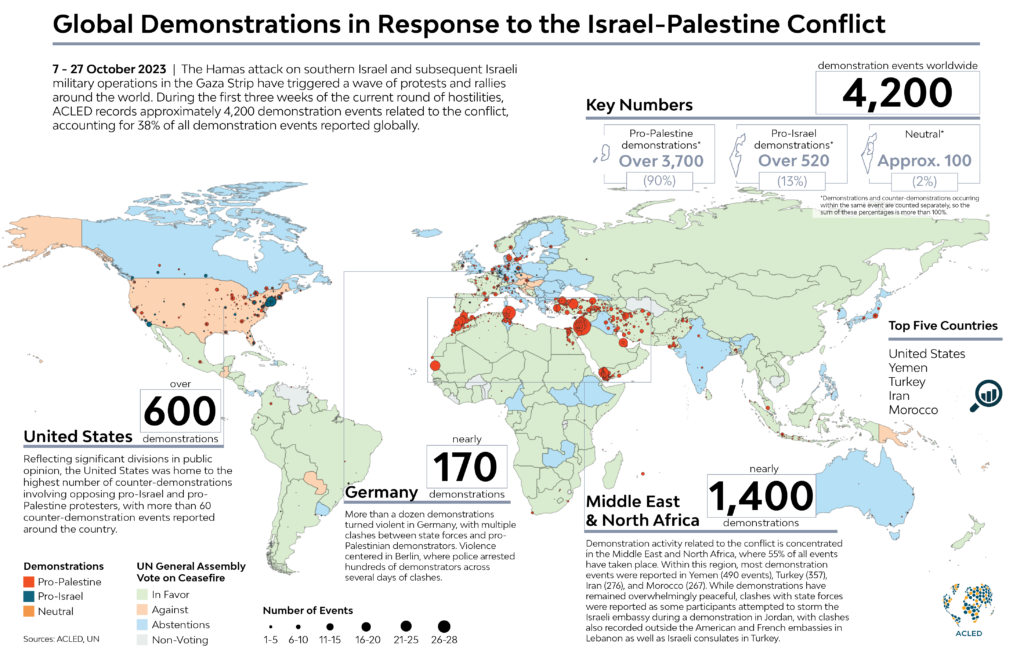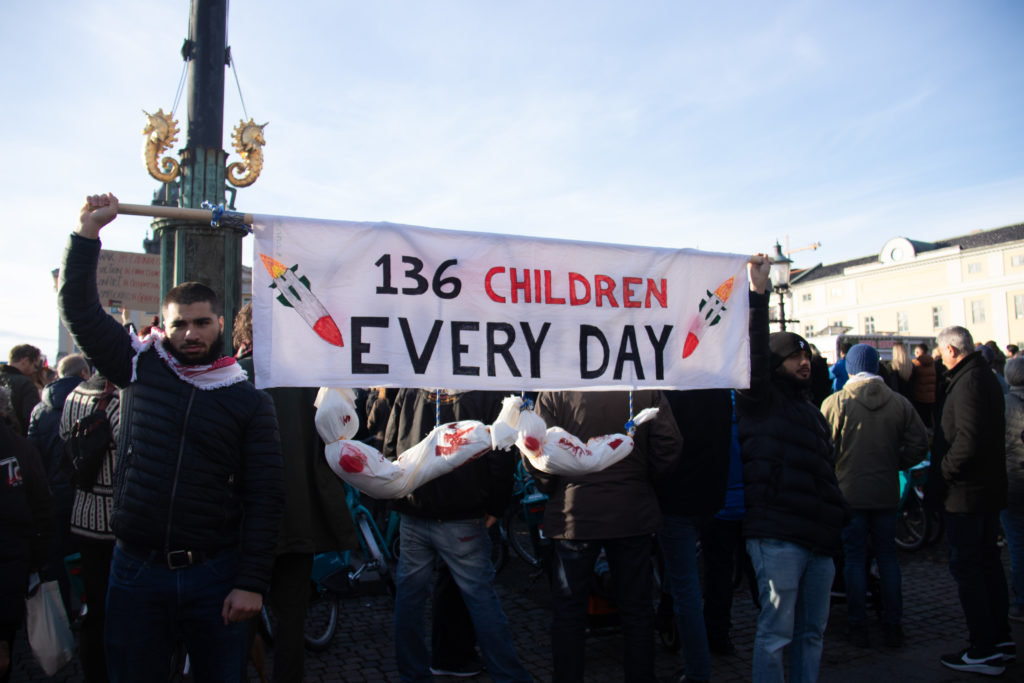
Since the attacks on Palestine the 7th of October 2023, the world has seen an unmissable surge of demonstrations and protests. Since the October 7th attacks, The Armed Conflict Location and Event Data Project has recorded 4200 demonstrations and rallies world-wide. While demonstrations in the Middle East and northern Africa account for 55% of the rallies, Europe has seen mixed reactions. Some European countries, such as Germany, have seen removal of signs and participants at rallies.

Credit: ACLED data
There have been pro-Palestinian demonstrations in Gothenburg since the attacks of October the 7th. A team from MIJ Times visited one of them to get a further understanding of how they have operated during the past months.
“I would just like a more fair depiction of reality”
Mohammed Al Masri
Yahya Al-Hammada (right) and Mohammed Al Masri (left), both participants of the demonstration, are together holding a big sign that says “136 children every day”.

“I would just like a more fair depiction of reality” Mohammad tells us when asked about why they are participating in the demonstrations. They elaborate that without the relevant historical and social information it is easy for media outlets to twist the reality of the situation that Palestinians are currently experiencing. The 136 children a day, referencing the rate at which palestinian children are dying, is therefore a consequence of a western ignorance according to Mohammad.
During the time period of 8th of November to the 7th of December, the MIJ Times have gathered social media posts posted by organisations present at various demonstrations and events for the pro-Palestinian cause in the Gothenburg area. The goal was to map the activity of pro-Palestinian demonstrations and activists, as well as understanding what has potentially made them different from other demonstrations. The data is can be seen using the link below.
Timeline of the demonstrations in Gothenburg
Sanna Ström, another participant of the demonstrations, tells the team about how odd she finds it when Swedish media uses neutrality as an argument for using the term “Palestinian territories” rather than Palestine. “To me it is not politically neutral to start to undermine what’s already politically agreed in Sweden; that we recognise Palestine as a state.” At the time of publishing, Palestine has been a recognised sovereign state by the Swedish ministry of foreign affairs since 2014. Ström argues that this then should work as evidence for the notion that describing Palestine as a state is the truly neutral narrative.
When approaching the people at the demonstration, many hesitated to speak to journalists, and most of those who did, asked us not to misrepresent them and quote them falsely. Kristofer Lundberg, a chairperson of Vänsterpartiet in Angered highlighted this apprehension stating, ‘’It’s because most of the established media already have their story or narrative, and they want a face and name for it, regardless of what they see or hear. They spread the story they decided on before going to the protest, and people feel that the media misled them, and because of that, there is a lot of skepticism.’’ over a phone call with the MIJ Times.
Many were also unhappy with the media because they felt that most had an agenda and didn’t genuinely listen. ‘’They [the protests] are generally peaceful. I mean, at every protest, we have demonstration guards. We have never needed to act to make it peaceful because people understand that if we are 6000 people in a demonstration and a window breaks, the media focus will not be on the 6000 people on the street; it will be that broken window‘’. This underscores their discontent with the media as the protestors feel that what they are doing is overshadowed by the media and that the media representatives try to fixate on minor things.
